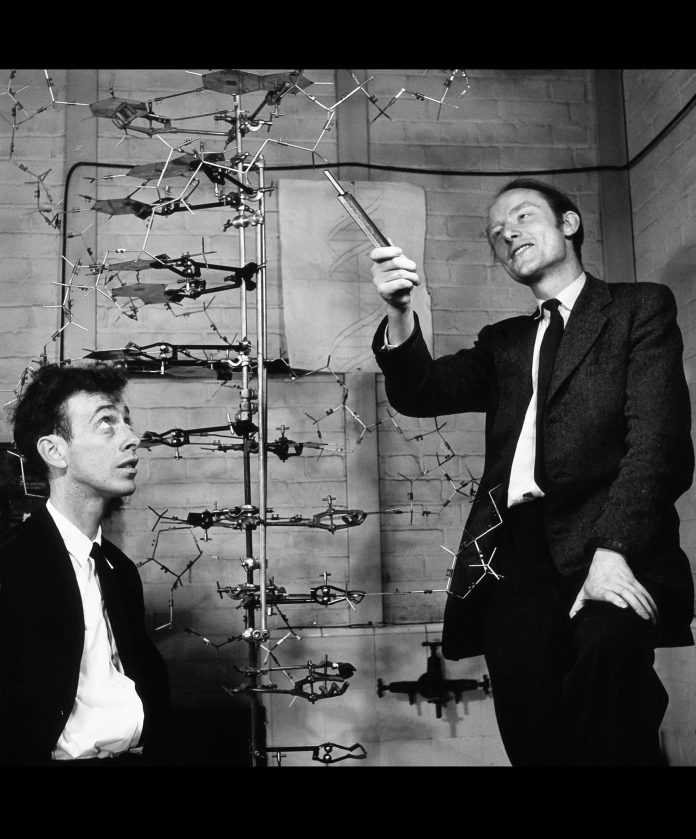
The iconic structure of the double helix was discovered 70 years ago. To celebrate, GEN’s John Sterling and Julianna LeMieux, PhD, sat down with Matthew Cobb, PhD, professor of zoology at the University of Manchester. Besides being an expert in the olfaction capabilities of maggots, Cobb is also familiar with the early history of molecular biology. His scholarship on the topic appears in several of his books. Here, Cobb talks to GEN about the discovery of the double helix, the essential role that Rosalind Franklin played in the process, and his most recent book, As Gods: A Moral History of the Genetic Age, which looks to the future—and the potential perils—of genetic engineering.
This interview has been edited for clarity and length.
LeMieux: You wrote about the events surrounding the discovery of the double helix in 1953 in your book, Life’s Greatest Secret. Now, you’re working on a biography of Francis Crick. Given that so much has been written about this period of science, what keeps drawing you back to this golden era of molecular biology?
Cobb: There are two things. First, Life’s Greatest Secret was a way of looking not so much at the actual discovery of the double helix, but rather the context around it. The book ended up being—without me realizing it—a paean to Francis Crick. He was just so incredibly smart that he bowled me over. And then, to my great surprise, Crick muscled his way into another book I wrote, The Idea of the Brain, which is about the history of neuroscience. So, I decided to write a biography fitting these two bits of his life together and trying to get much more at the man.
Also, I thought that writing a biography would be a challenge. Which it is. But this period just keeps on giving.
LeMieux: What is the significance of understanding those early experiments of molecular biology and setting the historical record straight?
Cobb: I’ve been going through letters that Crick and his partner James Watson were exchanging. In them, they are struggling with all these ideas—things that look obvious to us now. These letters were sent not by email, but by air mail. Back then, it took two weeks for a letter to get back and forth. It wasn’t very instantaneous, their correspondence.
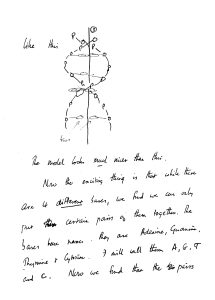
Looking back, it seems the history is really obvious. It seems like a straight line. But it wasn’t. It was complicated and bifurcated, with multiple strands of people getting things wrong. And that’s the only way you get things right in science—by making mistakes and realizing that you can’t be right. And then you try to think your way out of it and come up with an experiment.
I think it’s very important for students to realize that when they read the introductory chapters of textbooks, which often seem stuffy and narrow because they describe all these old white men and their brilliant doings. (I mean, that’s part of the story. There were a lot of old blokes who did brilliant things.) But what’s interesting is the mistakes, the confusion, and the uncertainty. And that brings these past periods alive. Because we’re all making mistakes all the time.
LeMieux: Are there specific events around the discovery of the double helix that you feel are still not well understood?
Cobb: The main one, which is known to historians, but not to the public, is the issue of what data Watson and Crick used from Rosalind Franklin and how they used it. If you read The Double Helix, Watson says that in early 1953, he was shown a photo called Photograph 51 (the famous X-ray crystallography image), and that told him immediately that DNA must be some kind of helical structure. And Rosalind Franklin had allegedly sat on this for six, eight months.
Now, as far as we can tell, there’s no reason to think that Watson’s sighting of Photograph 51 didn’t happen. In fact, there are references to it in Watson’s letters. But it didn’t actually tell him anything that wasn’t already accepted by everyone, including Franklin—DNA had some kind of helical structure.
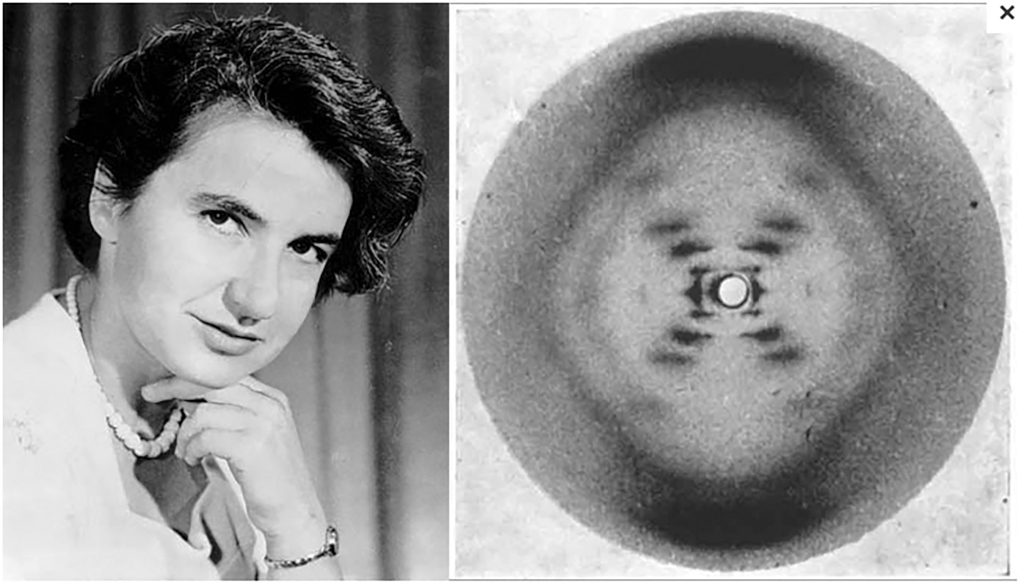
The key information that they were able to use was actually written in an informal report that they were shown. It was a summary of the work of everybody at King’s College, London.
That gave them two or three numbers that they could think about. But what’s striking is that they spent six weeks just floundering about and using what they later described as “the classic method of trial and error.”
We often learn that what they did was model building. This sounds very focused and sexy, but really, they were just fiddling around with precise molecular structures and trying to see how they might fit. The data that they had seen from Franklin meant that at the beginning they suspected they were wrong (for example, making a triple helix), but they were prepared to ignore that data. What they ended up doing with those data—which they didn’t have permission to use, and they should have asked about, and they continued to be deeply embarrassed about—was to go back to them when their model didn’t fit with the data. They would go back and try again.
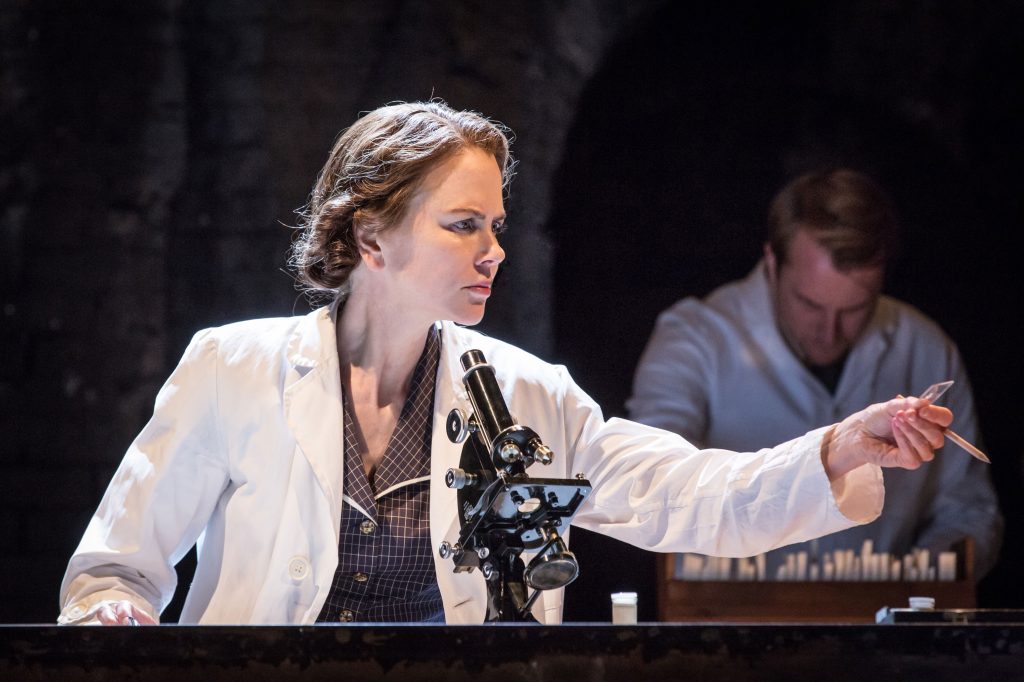
LeMieux: How have you been conducting your research?
Cobb: One of the things that I did was to go to Churchill College, in Cambridge, where Franklin’s archives are. I went with Nathaniel Comfort, PhD, a professor in the history of medicine at Johns Hopkins who is writing a book about James Watson. Nathaniel and I are in lockstep; we both just finished our chapters on 1953 and have been discussing how to interpret things. These include Watson and Crick’s relationship with Rosalind Franklin and what it was about her way of thinking that meant that she didn’t quite get there. And how, exactly, did they use her data? Because the story in The Double Helix, which is what most of us know, is a lot of hokum. And Watson made a lot of stuff up in there for literary effect.
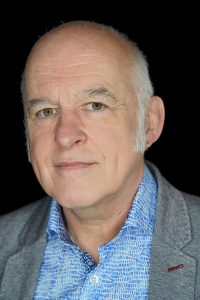
University of Manchester, UK
So, Nathaniel and I went through her notes. And it was absolutely fascinating to look at what she was writing and to try to reconstruct her thought processes. We read her scribblings to see what she thought about the different forms of DNA and how she interpreted them, and to appreciate the great insights that she had. But we also ask, what was stopping her? Because it is the case that, despite what a lot of people believe, she did not discover the double-helical structure of DNA. She was very close, and in a couple more months she would have got there, I guess.
But there was a big difference. Watson and Crick had something that very few of us have, which is a very relaxed relationship that allowed arguing and talking and debating and being prepared to have crazy ideas that the other person could shoot down.
This is something that Crick continued to do with Nobelist Sydney Brenner, PhD, for over 20 years. Every morning, they would just yak at each other for hours on end and talk rubbish. And most of it was rubbish! But every now and again, there would be something really insightful that they had seen in an article that they could develop further.
And that’s not exactly possible in today’s world, which focuses on how many Nature, Science, or Cell articles are on a CV. So, they were living in a very different world that was much more relaxed. But I think if we could reinject a bit of that back into science—more freedom and time to explore—I think everybody would benefit.
Sterling: In your book Life’s Greatest Secret, you have a chapter entitled Surprises and Sequences. What were some of the surprises?
Cobb: When they found the double-helical structure of DNA, it still wasn’t clear that DNA was the genetic material. What the discovery of the double helix says is that you don’t need the proteins because this structure contains information.
So, in a way, the discovery of the double helix made everybody think that maybe DNA could be the real material. But it still wasn’t shown that it was the genetic material in anything other than bacteria and viruses. Indeed, the first demonstration that DNA was the genetic material in a eukaryote didn’t happen till the mid-1970s.
Sterling: Let’s get a little controversial here. What are your views about Jim Watson? He seems to have truly tarnished his legacy by his recent comments and transgressions.
Cobb: Yeah. I’m glad I’m not writing the biography of Jim [laughs].
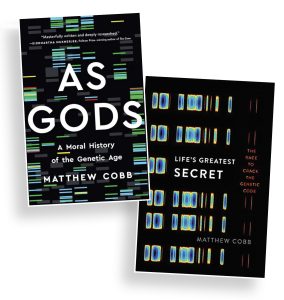 Sterling: I was delighted and privileged to review your most recent book, The Genetic Age. Or that’s the title of the U.K. version. What I read was the U.S. version, which is titled, As Gods. Do you have a preference?
Sterling: I was delighted and privileged to review your most recent book, The Genetic Age. Or that’s the title of the U.K. version. What I read was the U.S. version, which is titled, As Gods. Do you have a preference?
Cobb: Well, I didn’t like As Gods, which I’m sure is not a too much of a revelation to my publisher, as we had a blazing row about it! They really didn’t like The Genetic Age, and in the end, they won. And they were probably right. I think As Gods probably chimes more with the U.S. audience. Having two titles does create a bit of confusion. My first book had two different titles, and it ended up being reviewed twice in The Lancet! Nobody spotted that it was the same book! But both reviews were good, so that was all right. But I think my publishers knew what they were doing having the two titles.
Sterling: What was your objective in writing that book?
Cobb: To write the book that didn’t exist. There is a saying that people write books they want to read. I wanted to learn more about the history of genetic engineering because I knew nothing about it. I’m a professor of zoology. So, I know about flies and jellyfish and sponges and stuff like that. There’s virtually nothing written about the history of plant genetic engineering. And yet, in global terms, on both an applied and social level, the development of genetically modified crops has been one of the most significant developments. That really struck me. So, I wrote it to read it. There you go. That’s the short answer.





Comments are closed.